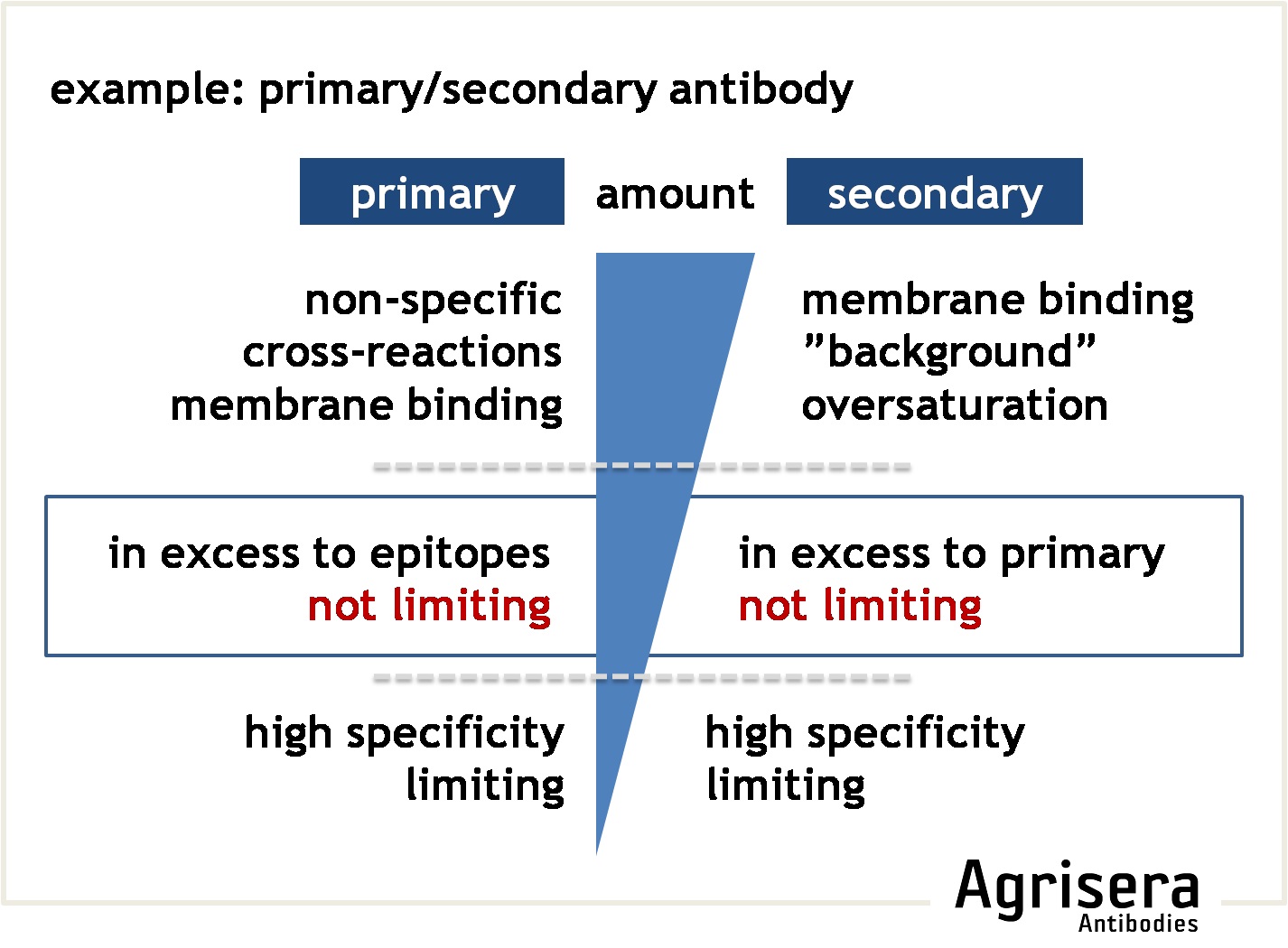| Q: Why are washing steps necessary in a Western blot protocol? A: Washing is done to remove excess amounts of blocking reagent, primary antibodies or secondary antibodies. The buffer used for washes is usually the same buffer used in the blocking or incubating solutions. Typically, the washing buffer will include a detergent, such as 0.05-0.5% Tween20. A Blocking protein in a 1:10 dilution can be added to the washing buffer to help minimize background. In some protocols, with multiple washing steps, the detergent is omitted in the last step. For reasons of reproducibility, it is recommended to keep the volumes and times of washes constant. The intensity of the washing steps can be elevated by:
If the background signal cannot be decreased by either increasing the blocker concentration, changing the blocker, lowering the protein load/well, shortening the incubation times of the primary antibody or increasing its dilution, modifications of wash length and intensity may help decrease the background. The washing step may often be over looked but is very easy to adjust. There is no "one protocol fits all" for Western blot, and specific parameters are very protein-antibody dependent.
|  Some general guidelines for washing: • Use high-purity water and chemicals to prepare all buffers • All containers used have to be cleaned and have flat bases • Keep the volume and time of washes constant • Washing steps are done with agitation |
Latest
How to check if protein transfer from a gel to a membrane was efficient2025-04-15 How to detect membrane proteins on Western blot?
2025-03-27 Rinse Right: The Hidden Power of Washing in Western Blots
2025-02-11 Can one Western blot protocol fit all antibodies?
2025-02-07 How to reconstitute lyophilized antibodies?
2025-01-17 What information to look for before purchasing an antibody?
2024-12-30 Membrane activation before protein transfer: which one to use, methanol or ethanol?
2024-12-23 Comparing antibodies between each other, why does it not work?
2024-11-25 How to remove cross-reactivity to Rubisco of a primary antibody?
2024-09-24 Which is an optimal buffer for protein extraction?
2024-07-29
Archive
- April - 2025
- March - 2025
- February - 2025
- January - 2025
- December - 2024
- November - 2024
- September - 2024
- July - 2024
- June - 2024
- May - 2024
- March - 2024
- February - 2024
- December - 2023
- November - 2023
- September - 2023
- July - 2023
- May - 2023
- March - 2023
- January - 2023
- December - 2022
- November - 2022
- October - 2022
- September - 2022
- August - 2022
- June - 2022
- May - 2022
- March - 2022
- February - 2022
- January - 2022
- November - 2021
- October - 2021
- August - 2021
- June - 2021
- May - 2021
- April - 2021
- March - 2021
- February - 2021
- January - 2021
- December - 2020
- November - 2020
- October - 2020
- September - 2020
- August - 2020
- July - 2020
- June - 2020
- May - 2020
- April - 2020
- March - 2020
- January - 2020
- November - 2019
- October - 2019
- March - 2019
- April - 2017
- February - 2017
- May - 2016
- February - 2014
- September - 2013
- December - 2010
